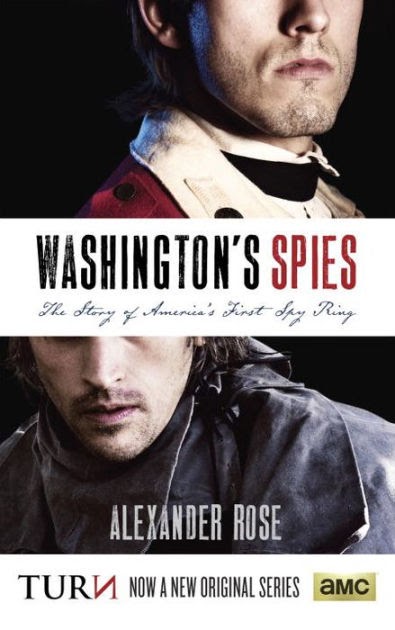When one delves into the enigmatic world of espionage during the American Revolutionary War, few narratives resonate as profoundly as that of “Washington’s Spies.” This significant tome offers readers an immersive glimpse into the clandestine operations that shaped the fate of a nascent nation. Through a meticulous exploration of historical accounts and dramatic reenactments, this book transforms the ordinary into the extraordinary by spotlighting the lives of the spies who risked it all for freedom.
The book deftly encapsulates the intricacies of spycraft in an era characterized by perilous uncertainty. It reveals how espionage became an essential component of George Washington’s strategies, showcasing a fascinating interplay between intellect and intrepid adventurousness. Readers are introduced to an array of multifaceted characters, each with unique motivations and backgrounds, which enriches the narrative and evokes empathy for their plight.
**Character Analysis: The Heart of Espionage**
At the forefront of this discourse is the remarkable character of Nathan Hale, an iconic figure whose bravery has been immortalized in American lore. The book scrutinizes Hale’s ultimate sacrifice, contextualizing it within the larger landscape of espionage. Through detailed analysis, readers gain insight into his psychological struggles and unwavering commitment to the cause.
Additionally, the work delves into the spymaster, Major Benjamin Tallmadge, who orchestrated a covert network that transcended social classes. Readers can expect a robust character study that juxtaposes Tallmadge’s intellectual acumen against the backdrop of the war’s chaos, providing a nuanced understanding of his formidable leadership and the logistical challenges he faced in a time of strife.
Moreover, we are introduced to the cunning Anna Strong, whose ingenious methods of communication and resourcefulness illustrate the pivotal role women played in espionage. The exploration of her character not only adds depth to the narrative but also challenges traditional perspectives of women during the Revolutionary War, urging the reader to rethink gender roles in historical contexts.
**Engaging Narrative Style**
What sets “Washington’s Spies” apart is its compelling narrative style. The author employs a blend of dramatic prose and vivid imagery that transforms historical events into gripping tales that captivate the imagination. Readers can expect a seamless integration of storytelling with factual evidence, allowing them to traverse through the muddy fields of 18th-century America alongside the spies.
The narrative oscillates between suspenseful moments of narrowly averted disasters and reflective quietude that provides insight into the emotional toll of espionage. The pacing is expertly controlled – one moment, readers may find themselves at the edge of their seats, and the next, they are enveloped in contemplative reflections on loyalty and sacrifice. This duality makes the book not only an educational resource but also a thrilling page-turner.
**Thematic Elements: Freedom, Loyalty, and Sacrifice**
The book’s exploration of overarching themes such as freedom, loyalty, and sacrifice resonates deeply within the historical foundations of the United States. It poses questions that echo through time: What are the lengths one is willing to go for liberty? How does one navigate the murky waters of loyalty when allegiances are tested? These thematic elements are woven into the very fabric of the story, inviting readers to not only witness the historical events but also reflect on their own values and principles.
**Historical Context and Accuracy**
A fascinating aspect of “Washington’s Spies” is its commitment to historical accuracy. The author meticulously researches primary sources, including letters, diaries, and military records, which imbue the text with authenticity. Readers can expect a well-rounded understanding of the political landscape and military strategies of the time, with a careful emphasis on how each espionage maneuver impacted pivotal battles and decisions.
The book does not shy away from discussing controversies and differing perspectives on historical figures. This approach encourages critical thinking and allows readers to cultivate a more profound understanding of the complex moral landscapes navigated by Washington’s spies. The reader comes away not just with facts but with an appreciation for the nuanced realities of war and betrayal.
**Cultural Impact and Modern Implications**
As one reads through the pages, it becomes apparent that the lessons gleaned from “Washington’s Spies” transcend the 18th century. In an era where information is both a weapon and a shield, the implications of espionage remain relevant. The book serves as a stark reminder of the delicate balance between security and liberty, a dilemma that persistently confronts modern societies. Readers will find themselves pondering how historical espionage practices inform contemporary intelligence strategies and influence global politics today.
**Conclusion: An Invigorating Read**
In conclusion, “Washington’s Spies” is an enriching literary venture that delves into the shadowy corridors of espionage with remarkable depth and compassion. It enlightens us about the men and women who participated in these covert operations, all while imparting resonating societal lessons about sacrifice, loyalty, and the human condition amidst the throes of war. This book remains a compelling read for history enthusiasts and casual readers alike, invigorating the ancient tales of courage and intrigue that continue to shape our understanding of freedom. With every chapter, one finds a richer understanding of our past, compelling us to appreciate the often-overlooked figures whose contributions were paramount in the establishment of a nation.
